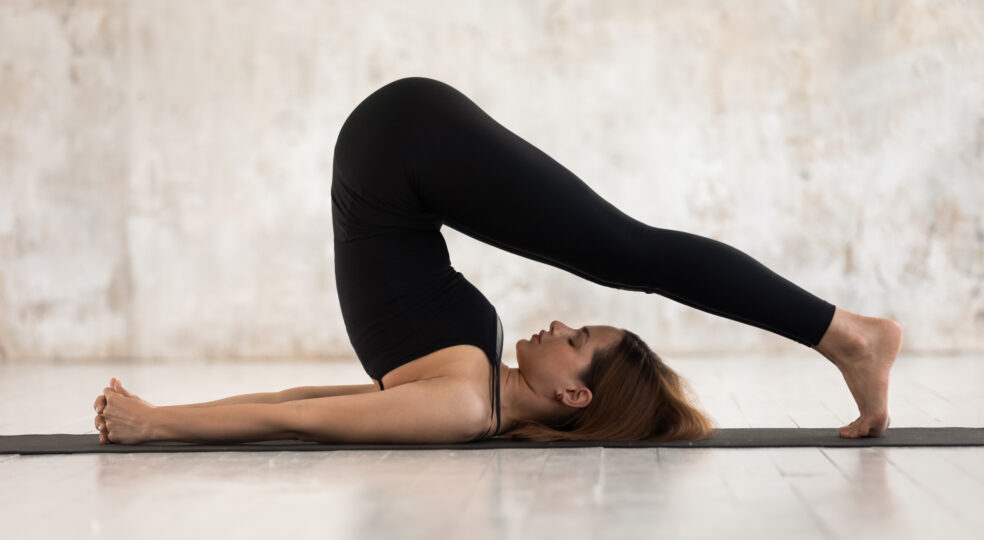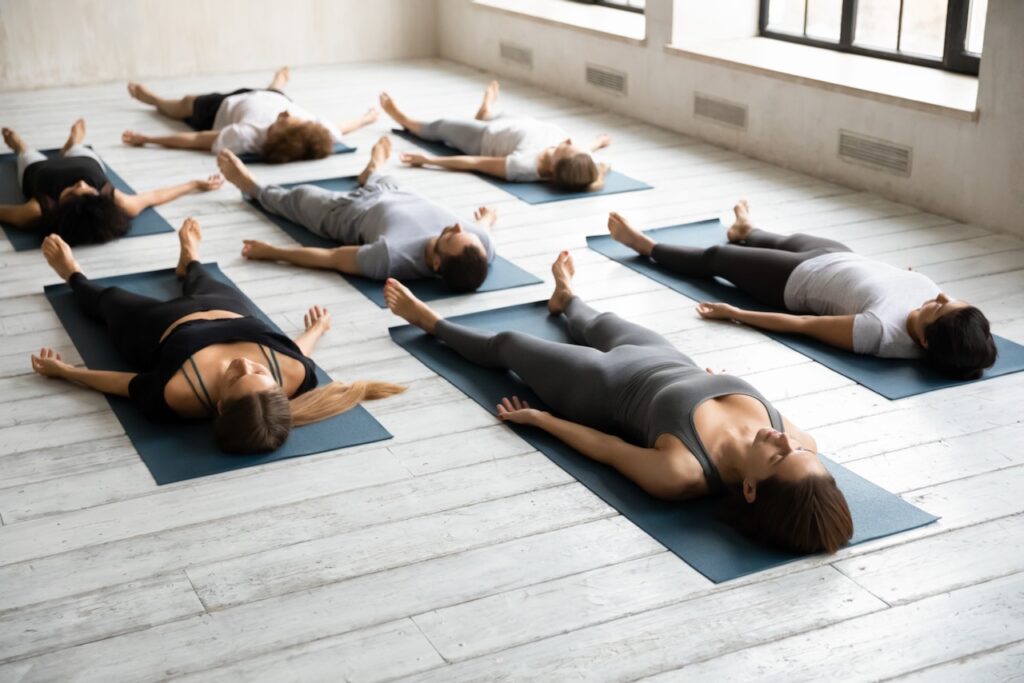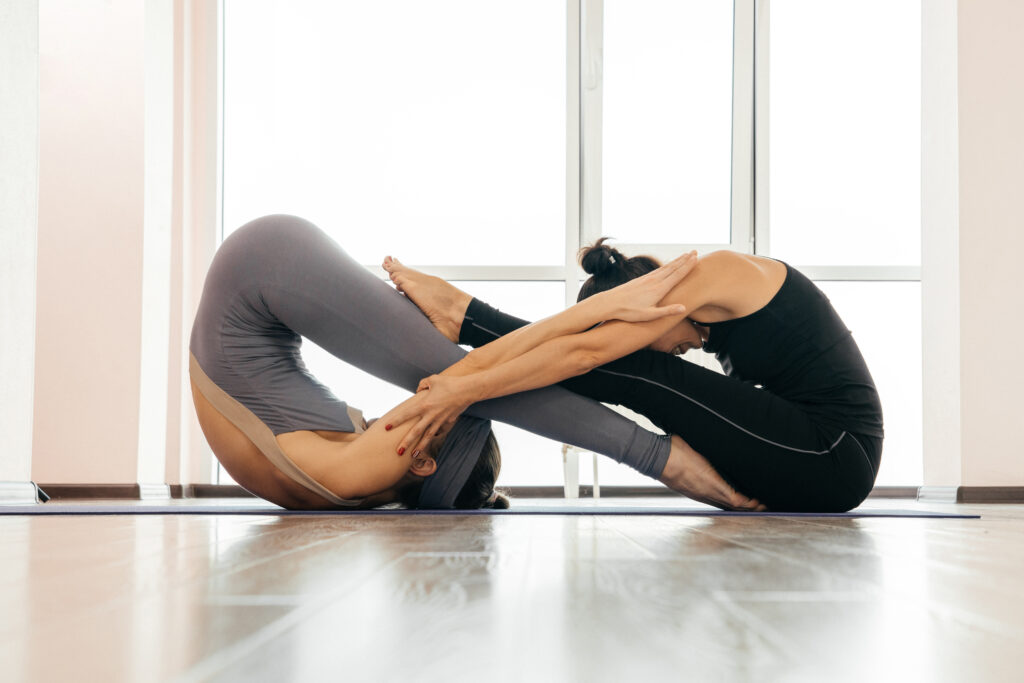
Yoga is a great way to relax the mind and harmonize the flow of energy in the body. But not all yoga is the same. There are countless different styles, so there is something for everyone. But with all this variety, it's easy to lose track. Don't worry, we'll bring light into the darkness! In this Contribution introduce a yoga style in more detail: Yin Yoga!
Yin yoga is a very calm and rather passive style of yoga. The exercises are mostly performed sitting or lying down. Unlike other styles, it is not primarily about muscular energy. The focus here is rather on the Let go from physical concepts. In Yin Yoga, you approach your inner self in a meditative way and focus on your anatomy as such.
The concept of yin yoga can be better understood if we take a closer look at the origin of the term. The term is derived from the Chinese concept of yin and yang. These are opposing forces: yin as the calm, passive and soft energy and yang as the dynamic, active and hard energy. From an anatomical point of view, yin stands for the connective tissue and yang for the muscles.
Yin yoga exercises are intended to provide a balancing counterpart to all the active and dynamic yoga styles create. In this passive form of yoga, poses are held for a long time, sometimes for up to seven minutes. Neutral reclining positions are often integrated between the individual poses to ensure harmonization.
If you have practiced a different style of yoga before, you may find one or two of the poses familiar. For example, there is also the sun salutation. However, to make it easier to distinguish between the poses, they are given different names in yin yoga. For example, the well-known pigeon is called swan here.
Why is this differentiation so important when the exercises actually look identical from the outside? Because the intention behind them is different. In Yin Yoga exercises, the poses are practiced with as little muscle tension as possible. All muscles that are not currently needed should be completely relaxed. This creates space for a particularly calm and meditative state.
But to be precise, the main focus is not on achieving such a state. Rather, it is about intensively stretching deep-seated body structures with the help of gravity.

You don't have to be a professional to practise yin yoga exercises. We'll show you a few exercises that you can use to easily enter the world of passive yoga, even as a beginner.
Sit on the floor and stretch your legs straight out in front of you. Then stretch your arms out in front of you and place them next to your legs with your palms facing upwards. Let your shoulders sink down in a relaxed manner.
If this position is still uncomfortable for you, for example because it causes pressure in your head, then use a pillow to help you. Place it on your legs and place your hands crossed on top of it. Then lower your forehead onto your hands.
Lie on your stomach and place your forearms in front of you. They should form a right angle to your upper arms. Your legs are straight and your feet are straight. Keep your abdomen slightly tensed and make sure that your pelvis does not lose contact with the floor. Focus on your leg and gluteal muscles and keep them relaxed.
If you feel uncomfortable pressure in your lower back, put your toes up. This will reduce the tension and provide relief. If, on the other hand, you want to go further into the stretch, put your hands up and allow your upper body to rise even higher.
Lie on your back on your mat. Extend your legs straight down and your arms up. Your entire body is in contact with the floor. Think of your pelvis as a fixed point around which the rest of your body now rotates. Push your upper body and outstretched arms to the right and let your legs follow. Your body now forms the eponymous crescent moon.
To get into a more intense stretch, hold your left wrist with your right hand. Breathe into the stretched left side of your body for at least three minutes and then switch sides.
Routines are the be-all and end-all for an organized and healthy life. They reduce stress and save you an incredible amount of Time. You can also use them to create healthy Habits without them feeling like a chore to you. Over time, they integrate naturally into your everyday life. This is exactly how it works with yin yoga exercises.
Where you integrate your yoga routine into your everyday life is up to you. However, make sure that you incorporate it in a meaningful place. Many yogis practise their exercises in the morning, directly after getting up. It helps them to start the day feeling relaxed and invigorated at the same time. Just give it a try! After getting up, grab your mat - you can even go out into the garden if the weather is nice - and do your exercises. Follow this with a shower and a balanced breakfast and the day is yours.
For many yogis, yin yoga also proves its worth as part of their evening routine. After a stressful day, it helps them to wind down and calm all the thoughts that are still buzzing around in their heads. They fall asleep faster and sleep more peacefully.
You can also practise yin yoga exercises directly after work to ring in the end of the day. Your yoga exercises then mark the transition to your well-earned free time, which you can enjoy with a clear head.

Countless studies show how strongly mental health affects physical well-being. Did you know that enormous stress over a long period of time can trigger exactly the same somatic symptoms as inflammatory diseases? This makes it all the more important that you regularly give yourself a little Time out even if it's just half an hour a day doing a few yin yoga exercises.
Yin yoga exercises are a great way to free your mind from all the stress of everyday life. For a moment, you focus only on yourself and your body. You feel into every single fiber, while you check which muscle you are currently using fully and completely. relax can. Everyday madness has no place in your life during this time. Your head and your mind are completely free.
At the same time, you develop a completely new body awareness. You will learn to target your individual body fibers and understand certain interlinkages much better. For example, you can actively relieve tension in your neck or back, which is a typical side effect in many professions, and prevent it in the future.
Yin yoga exercises not only have a positive effect on your mind, but also on your body. physical health off. If that's not reason enough to try it out for yourself, what is?
Probably the most important aspect of Yin Yoga exercises is letting go - not only mentally, but also physically. It may sound easy to simply let go of certain muscles completely, but in practice this is not the case at all.
We humans are used to certain muscles being under constant tension. They keep us upright, protect our organs and enable us to flee immediately in dangerous situations. The whole thing has an evolutionary background. Suddenly letting go of all these basic structures is not so easy at first.
At the beginning, a high degree of Concentration required. You need to focus on letting go of the structures that you don't need for the current pose. Take your time to do this. You don't need to be rushed by anyone or anything, as you are holding each pose for at least three minutes. This gives you enough time to gradually concentrate on your individual muscle groups.
If you approach it conscientiously, you will quickly get the hang of it. Then you can fully stretch the deep structures that the yin yoga exercises are designed to address and get the most out of this style of yoga.

